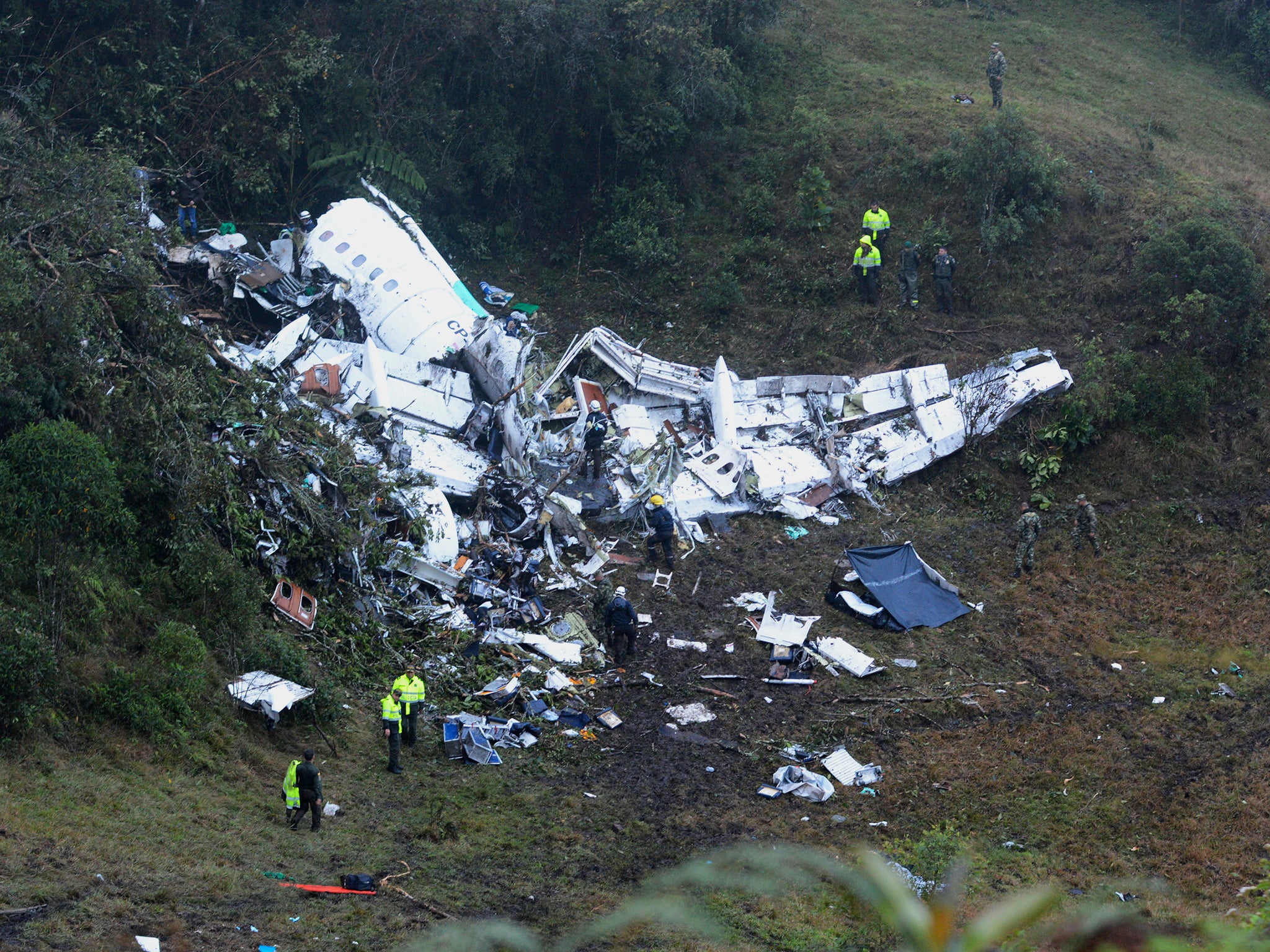Mystery of downed LaMia jet: did captain know he was heading for trouble?
Pilot of plane carrying Chapecoense football team did not declare a fuel emergency

Your support helps us to tell the story
From reproductive rights to climate change to Big Tech, The Independent is on the ground when the story is developing. Whether it's investigating the financials of Elon Musk's pro-Trump PAC or producing our latest documentary, 'The A Word', which shines a light on the American women fighting for reproductive rights, we know how important it is to parse out the facts from the messaging.
At such a critical moment in US history, we need reporters on the ground. Your donation allows us to keep sending journalists to speak to both sides of the story.
The Independent is trusted by Americans across the entire political spectrum. And unlike many other quality news outlets, we choose not to lock Americans out of our reporting and analysis with paywalls. We believe quality journalism should be available to everyone, paid for by those who can afford it.
Your support makes all the difference.As investigators pore over the sequence of events that led to the worst air disaster of 2016, attention is focused on the captain of the plane, Miguel Quiroga, and the decisions he took on fuel provision and alerting air-traffic control.
Seventy-one people, including most of the players on a leading Brazilian football team, died when their chartered Avro RJ85 jet crashed on the approach to Medellín’s main airport. They had departed from Santa Cruz in Bolivia on the final leg of a journey to the Colombian city for the first leg of the Copa Sudamerica final.
The aircraft was chartered from LaMia, based in Santa Cruz. Bolivia’s aviation authority, the DGAC, has grounded the airline indefinitely.
The initial decision to deploy a commuter jet designed for short hops on a flight of 1,850 miles looks questionable. The journey is the same distance as Belfast to Istanbul – a route that would not be sanctioned as a regular scheduled route using such a plane.
The longest regular trip made by the aircraft type is believed to be 1,625 miles between Perth in Australia and Christmas Island, a journey of about four hours. The RJ85 had been flying for almost five hours when it crashed.
A flight plan leaked to the media shows the “estimated elapsed time” – ie the predicted length of the flight – as four hours, 22 minutes. The “endurance”, or maximum flying time, is shown as exactly the same.
Three hours into LaMia flight 2933, the aircraft passed over Leticia airport, in the Colombian Amazon. By this stage the pilots should have had a clear picture of the amount of fuel remaining in the tanks.
About four hours into the flight, the aircraft could have diverted to Bogota, the declared alternate airport.
At about that time, an AeroColombia flight took off from the Colombian capital, destined for the Caribbean island of San Andres. It then declared a diversion to Medellín because of a mechanical fault. The LaMia aircraft was ordered to fly a holding pattern while the AeroColombia flight was given priority to land. It is feared the manoeuvre exhausted the available fuel.
International aviation law requires the pilot-in-command to ensure that there is always enough fuel on board “to proceed to an aerodrome where a safe landing can be made with the planned final reserve fuel remaining upon landing.”
The absolute minimum “planned final reserve fuel” allows for the aircraft to fly for half an hour at holding speed at an altitude of 1,500 feet above the airport.
When the crew predict that landing at the nearest safe airport will result in having less than the planned final reserve, they are required to declare a fuel emergency by broadcasting “Mayday, Mayday, Mayday, Fuel”.
Air-traffic controllers are then obliged to prioritise the aircraft to enable it to land as soon as possible. From the leaked recording of the conversation with air-traffic control, it appears that no fuel emergency was ever declared. The transcript indicates a pilot saying only “it's in failure, uh, total... electrical and fuel”.
There is no clear evidence that the aircraft ran out of fuel through mismanagement. Alternative explanations include faulty fuel gauges, a fuel leak, or an issue with the complex fuelling system for the four-engined aircraft.
But there are echoes of a crash on the approach to New York JFK of a Colombian plane in 1990. Eighty-three people died when the Boeing 707 from Medellín crashed well short of the runway after running out of fuel.
The investigation blamed “the failure of the flightcrew to adequately manage the airplane's fuel load, and their failure to communicate an emergency fuel situation to air traffic control”.
Any captain who declares a fuel emergency faces an investigation from the aviation authorities, with possible consequences for the airline. Captain Quiroga was part-owner of LaMia.
Join our commenting forum
Join thought-provoking conversations, follow other Independent readers and see their replies
Comments